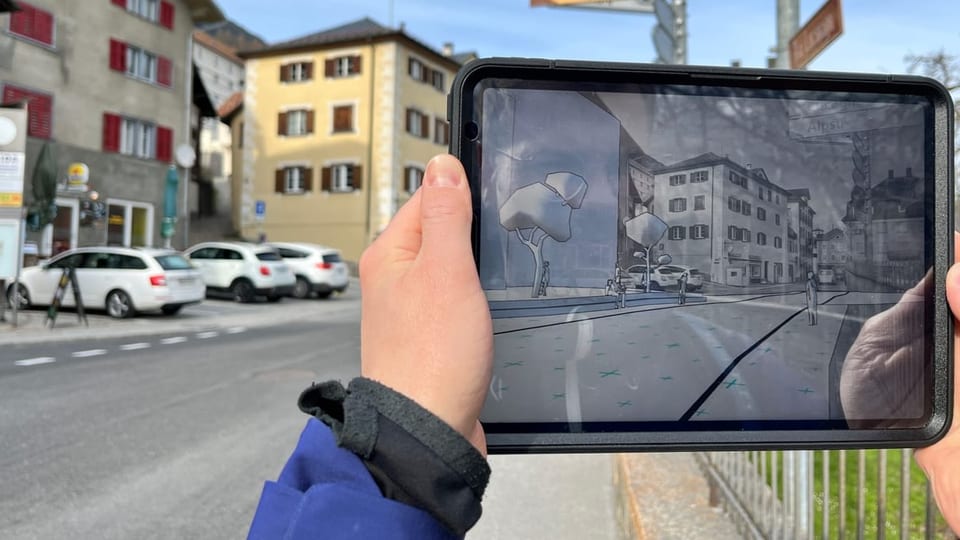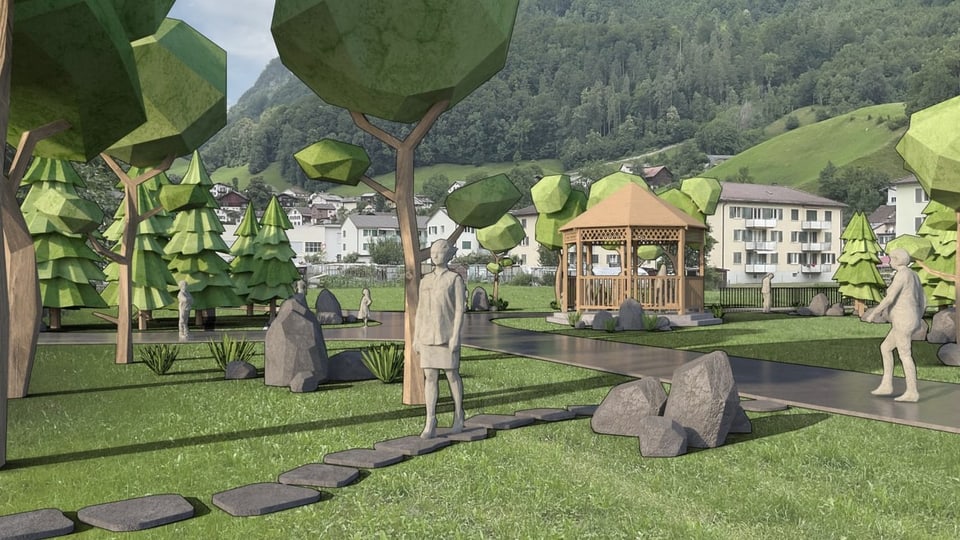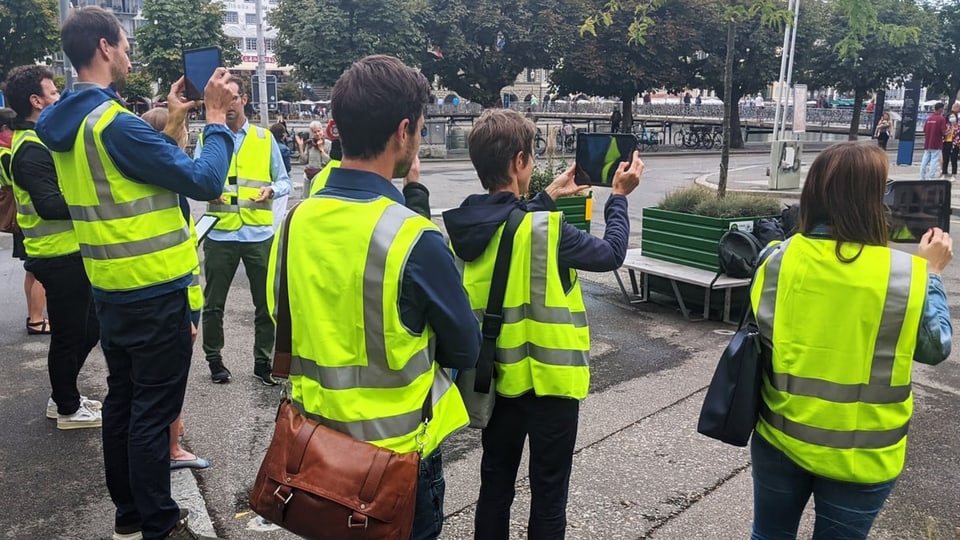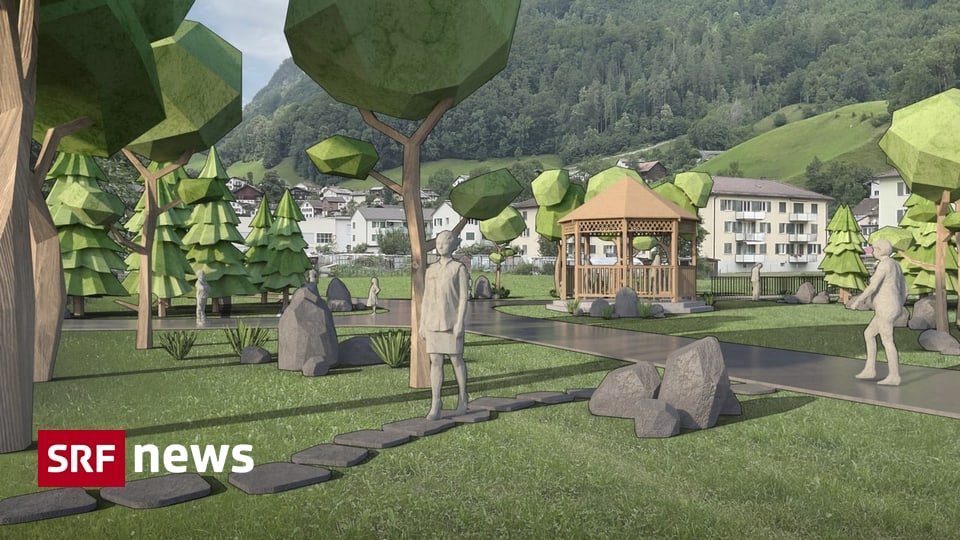Researchers at Lucerne are working on how to make complex building projects understandable to ordinary people.
Tobias Mater walks along the Bahnhofstrasse in Lucerne holding a plank in front of his face with his arm outstretched. On the screen, a project manager from Lucerne University of Applied Sciences and Arts sees in detail what the Bahnhofstrasse will look like in a few years according to Lucerne’s plans: a car-free park, with a tree-lined boulevard, benches, bicycle parking and street cafes.
Caption:
The environment is supplemented by building plans using augmented reality. Here, for example, is a bicycle stop on Bahnhofstrasse in Lucerne.
University of Lucerne
The tablet’s camera records the actual environment and the software complements it with virtual buildings and other planned objects. Tobias Matter kneels slightly in front of a digital tree and holds the board toward the top of the tree. “I can look at the planned construction project from all possible points of view,” he says.
Better information for ordinary people
The university’s research team digitally recorded the real area of Bahnhofstrasse – and then predicted planned changes to it using augmented reality. You can already experience the futuristic design in 3D on the tablet.

Caption:
If the tablet moves, the virtual environment also moves. The planned building can be viewed from all possible points of view. Decents, Graubünden.
University of Lucerne
Through this highly realistic representation, Tobias Mater wishes to resolve the so-called paradox of participation. He explains: At the start of the construction project, the locals actually have the most scope to influence the project. At the same time, the project is still very abstract at this point. “Usually there are only 2D plans, which are difficult for ordinary people to read. As a result, people don’t really care about them.” Or: you feel badly informed, you have many unanswered questions, and therefore you are suspicious of the construction project.
Involve the locals
With augmented reality, such questions can be clarified from the start, Mater says. Various communities are already working with Lucerne University of Applied Sciences and Arts. In addition to the city of Lucerne, Disentis to renovate the city center, or Glarus to design a park development.
Residents will be better informed about upcoming construction projects. For example, augmented reality can transparently and honestly show “how high a planned building will be and exactly where it will cast shadows,” says the project manager.

Caption:
Depending on the state of the project, the virtual environment can be viewed realistically or more schematically. Cartoone Park, Glarus.
University of Lucerne
The more active those affected are involved in planning, the larger the project will be. Tobias Mater is convinced that this would also prevent one objection or the other. This is not clear yet, says Christoph Niederberger, director of the Swiss Association of Municipalities. Augmented reality is just one way to inform residents about a construction project.
within reach of the general population
However, Niederberger sees great potential: “New populations can be stimulated to participate even more.” He thinks above all of the young people who have not felt much interest in the participation processes that have taken place so far.

Caption:
So far, the public has only been able to access the augmented reality program on official tours. This is about to change. Bahnhofstrasse, Lucerne.
University of Lucerne
The augmented reality software is currently only accessible to a limited extent. Depending on the construction project, it can be considered as part of a general tour. “The goal, though, is to make it accessible to the general public at some point,” says Tobias Mater. For example, with the download link on the website of the municipality or city in question. A special device is not needed, practically all modern smartphones are suitable.

“Certified tv guru. Reader. Professional writer. Avid introvert. Extreme pop culture buff.”







More Stories
Samsung Quantum Dot TV: Art meets technology
Pitch: €56m for energy startup Reverion
Plastoplan: Plastics for Energy Transition